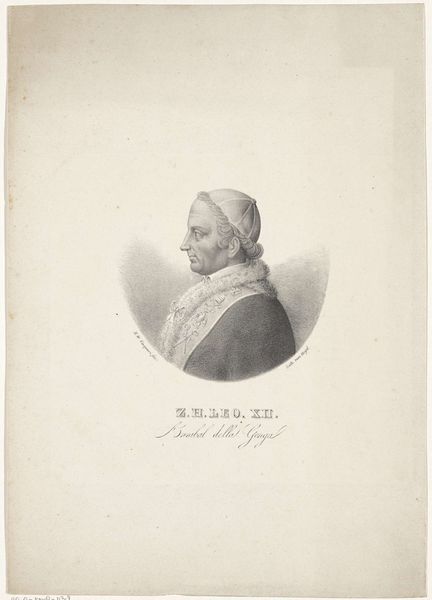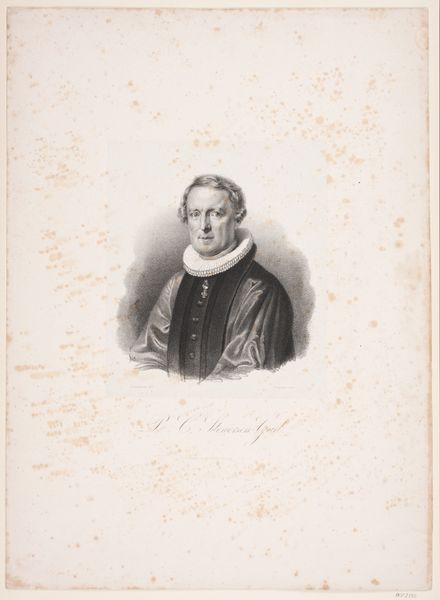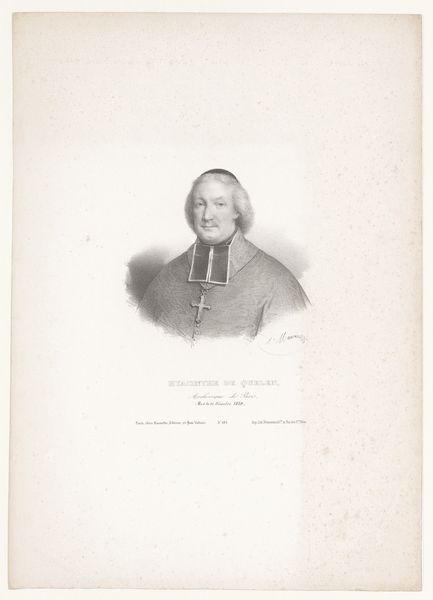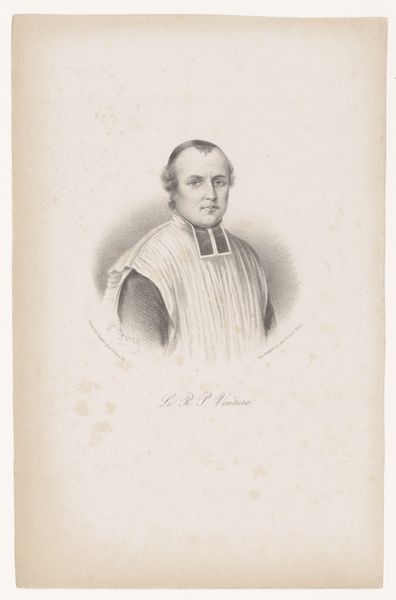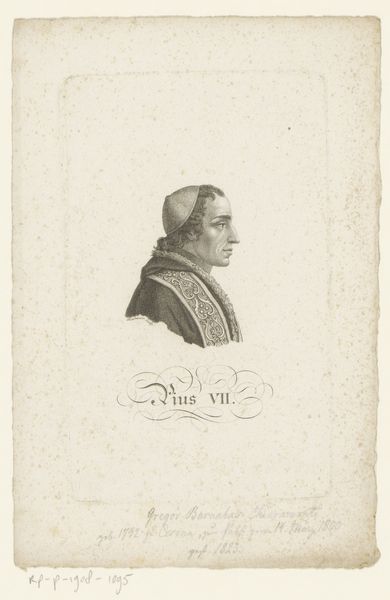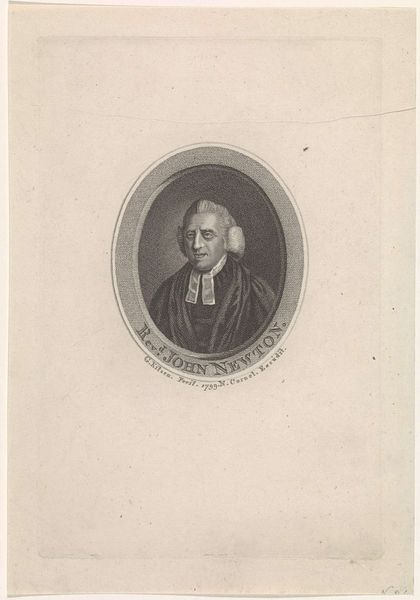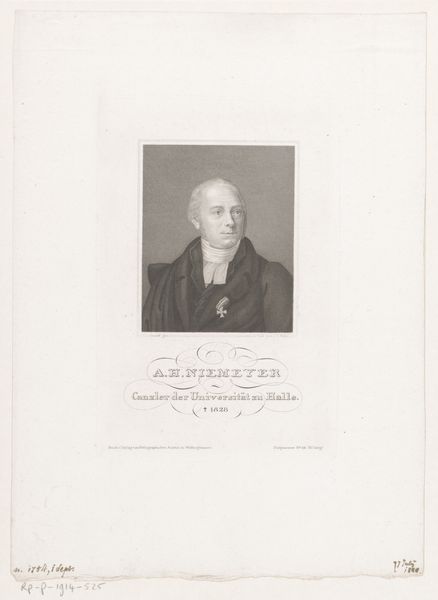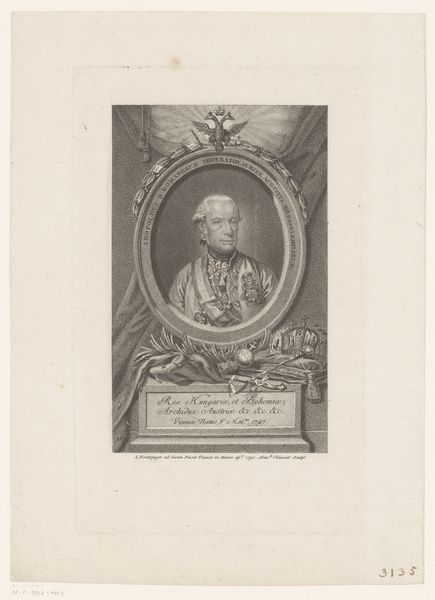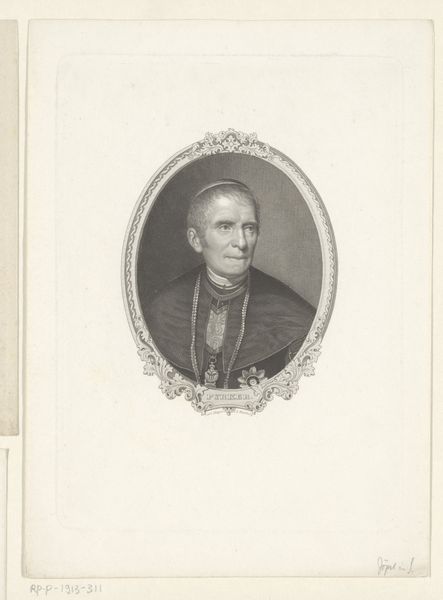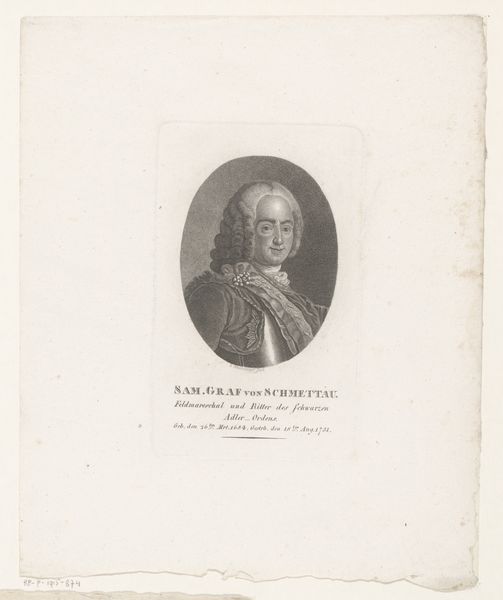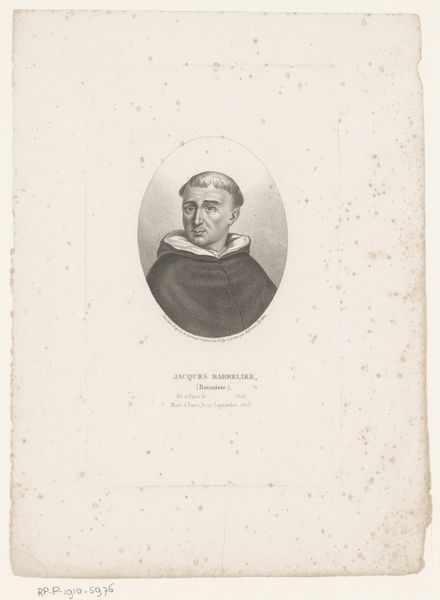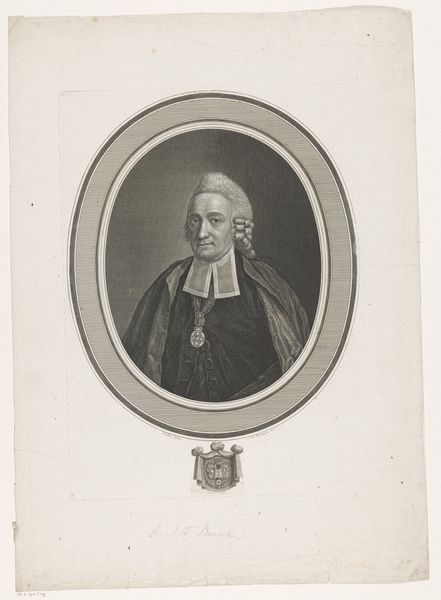
print, engraving
#
neoclacissism
# print
#
old engraving style
#
engraving
#
realism
Dimensions: height 276 mm, width 202 mm
Copyright: Rijks Museum: Open Domain
Editor: This is Leopold Beyer’s "Portrait of Pope Leo XII," likely made sometime between 1823 and 1877, and it’s an engraving. I am immediately struck by the precision and detail in the rendering of his face and vestments, given it's a print. It's so meticulously done. How do you approach analyzing an engraving like this one? Curator: I focus primarily on the relationship between form and content. Note the Neoclassical style in the portrait's oval frame. Consider the composition: the profile view emphasizes linearity and order, characteristic of its time. The light source seems diffuse, avoiding dramatic contrasts. How do you interpret that lighting choice? Editor: Well, the even lighting sort of flattens the image, preventing it from feeling overly emotional or dramatic, I think. It contributes to a sense of calm…almost detachment? Curator: Precisely. Furthermore, consider the lines themselves. The engraving technique relies on creating form through variations in line density and direction. Where do you observe the artist varying these qualities most significantly? Editor: I see that the lines around the face are finer and closer together to create the shadows, especially along his cheek and around his eyes, adding depth to the portrait. And the hatching on the robe seems more uniform. Curator: Observe how the crispness and control over line serve the overall formal objective: to present a highly controlled and idealized representation. This control extends from the texture of the fabric to the specific representation of the sitter’s bone structure. What might that suggest to you? Editor: It reinforces the sense of authority and the calculated depiction. The image conveys that through technical execution of lines, and in the composition's austerity. It goes beyond just documenting a likeness; it communicates something about power and presence. Curator: Indeed. And our observations regarding these compositional and technical strategies of representation offer insights into broader questions of style, intention and historical significance. Editor: I see what you mean! Now I’m thinking about the visual rhetoric of power that's conveyed simply by the formal decisions of line, light, and composition, completely apart from his position as Pope. That's interesting.
Comments
No comments
Be the first to comment and join the conversation on the ultimate creative platform.
